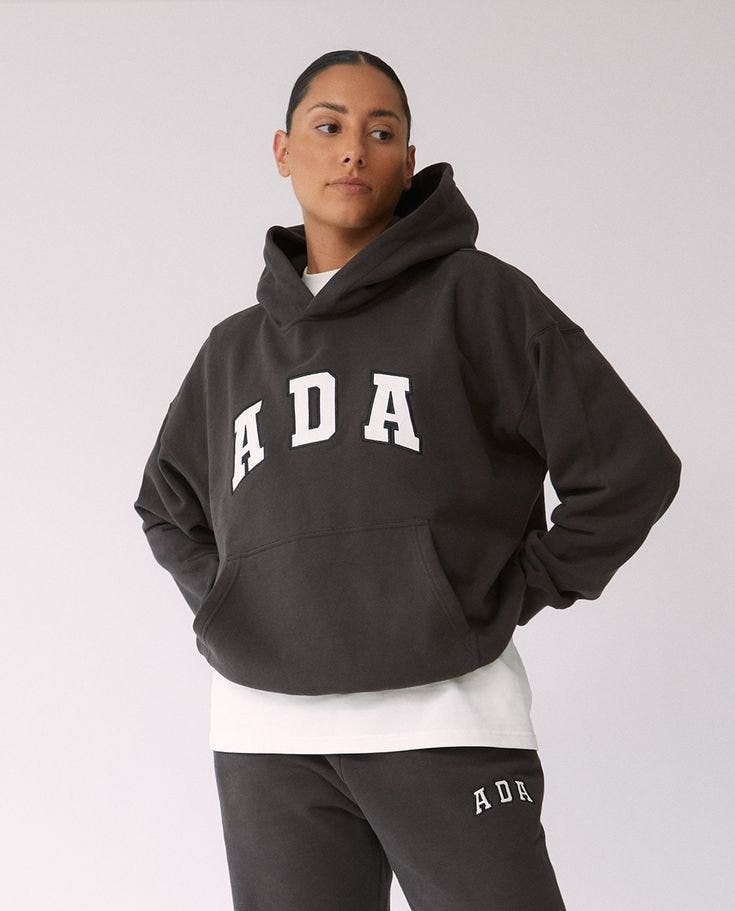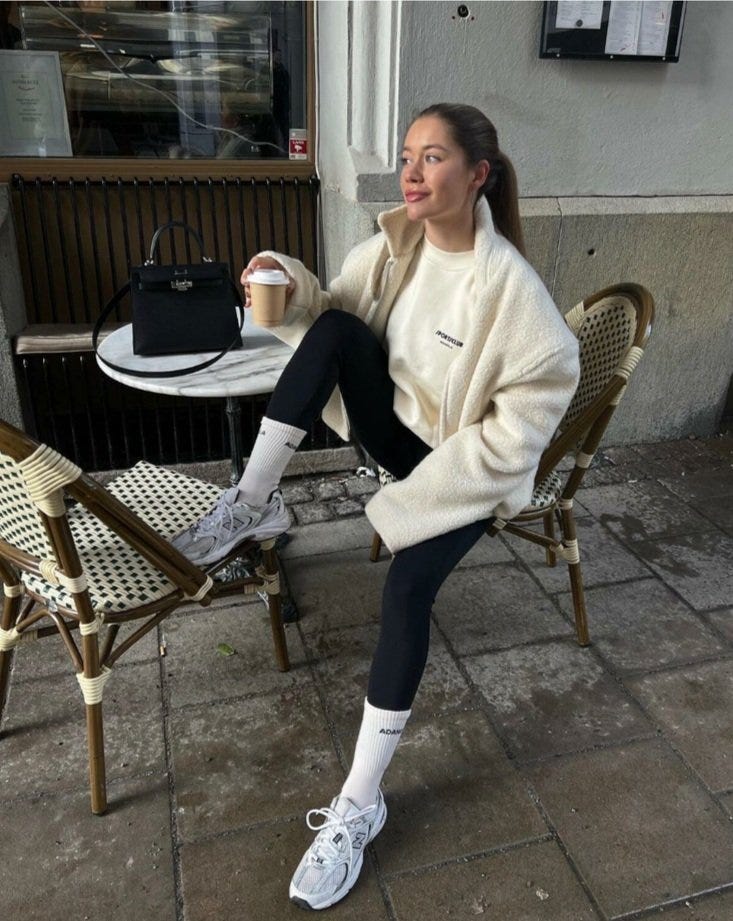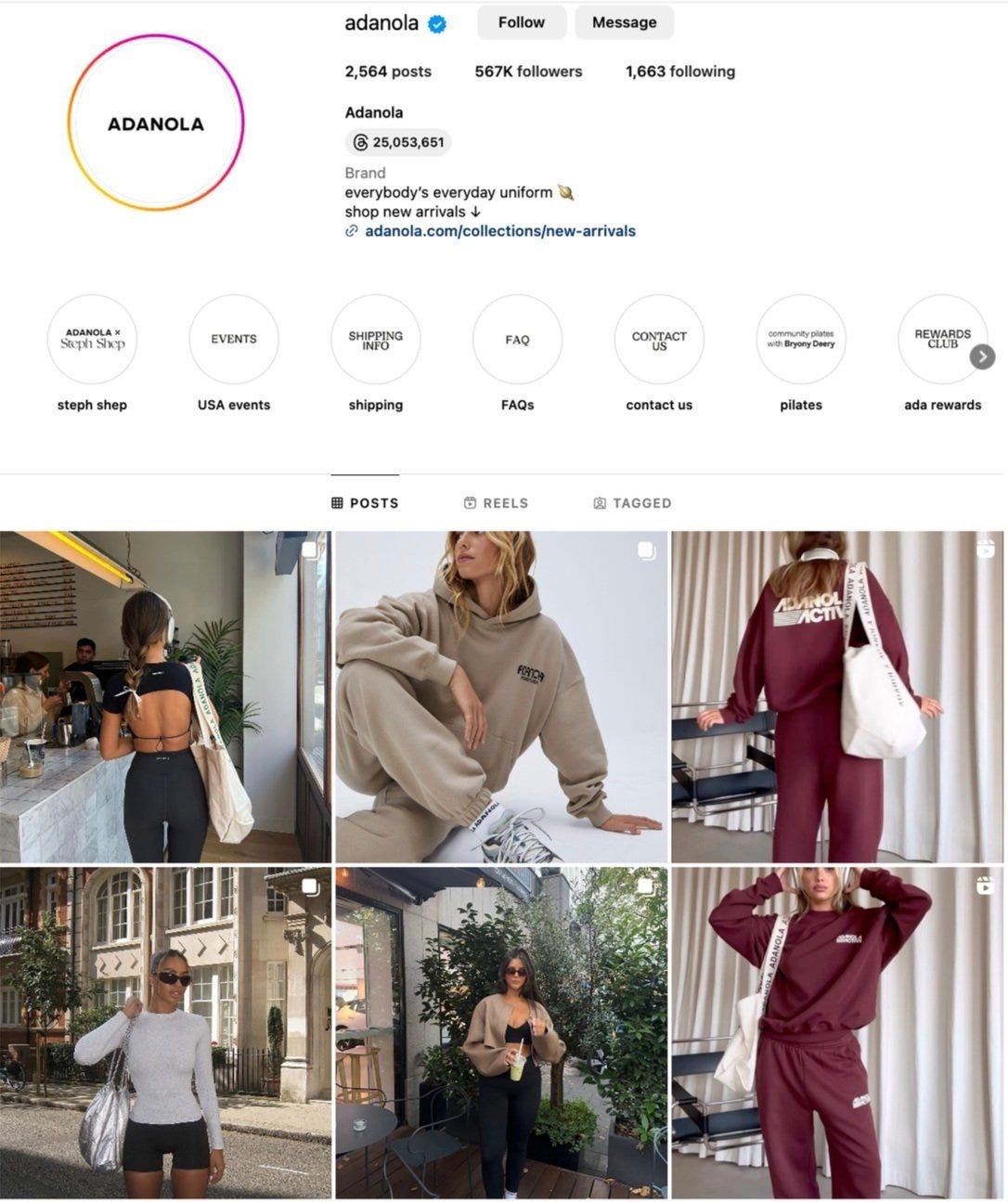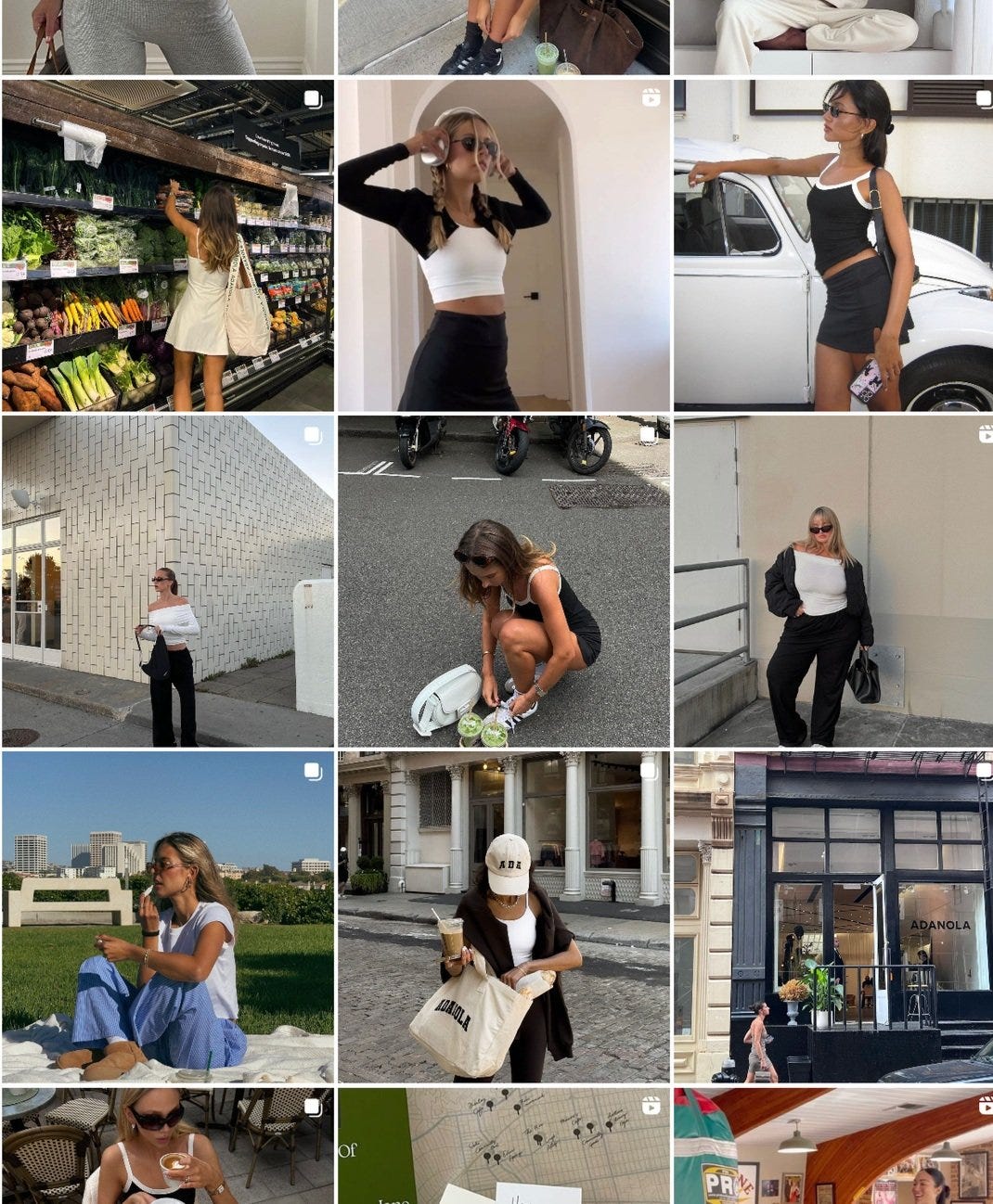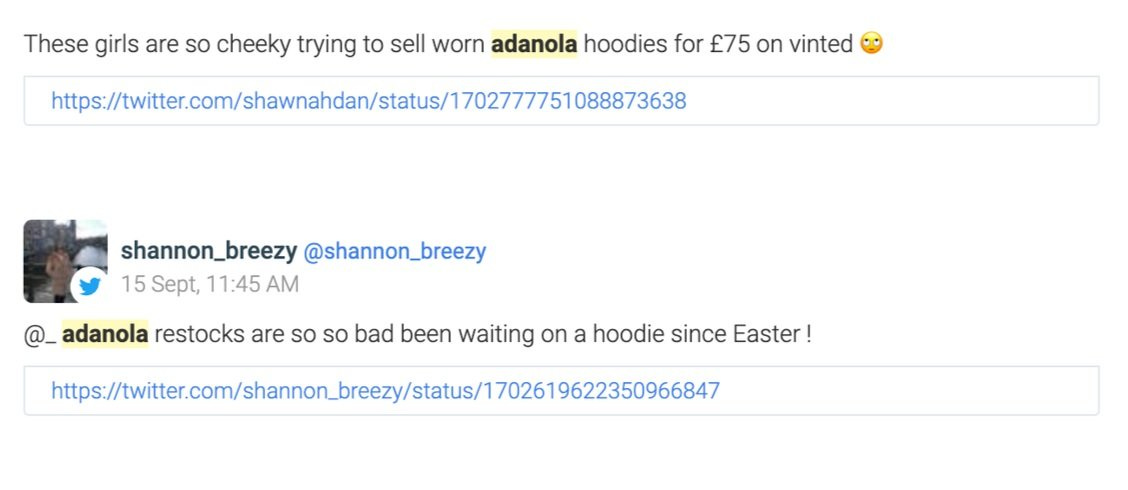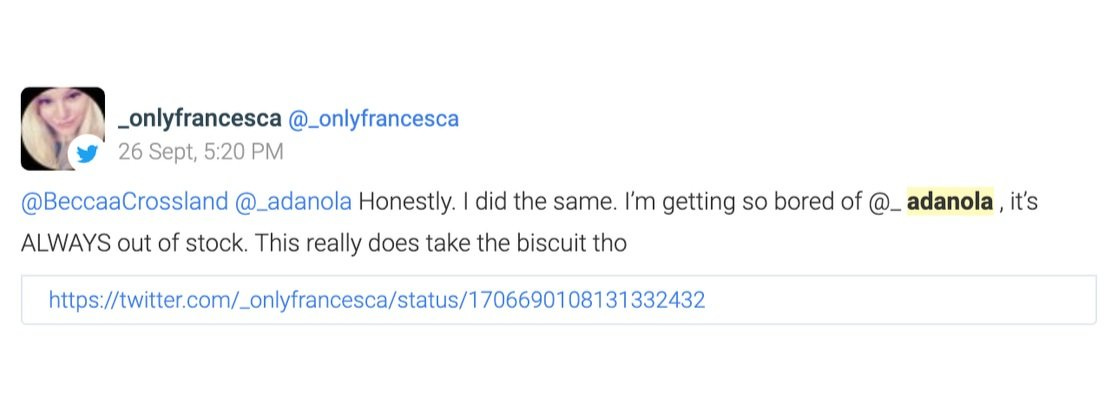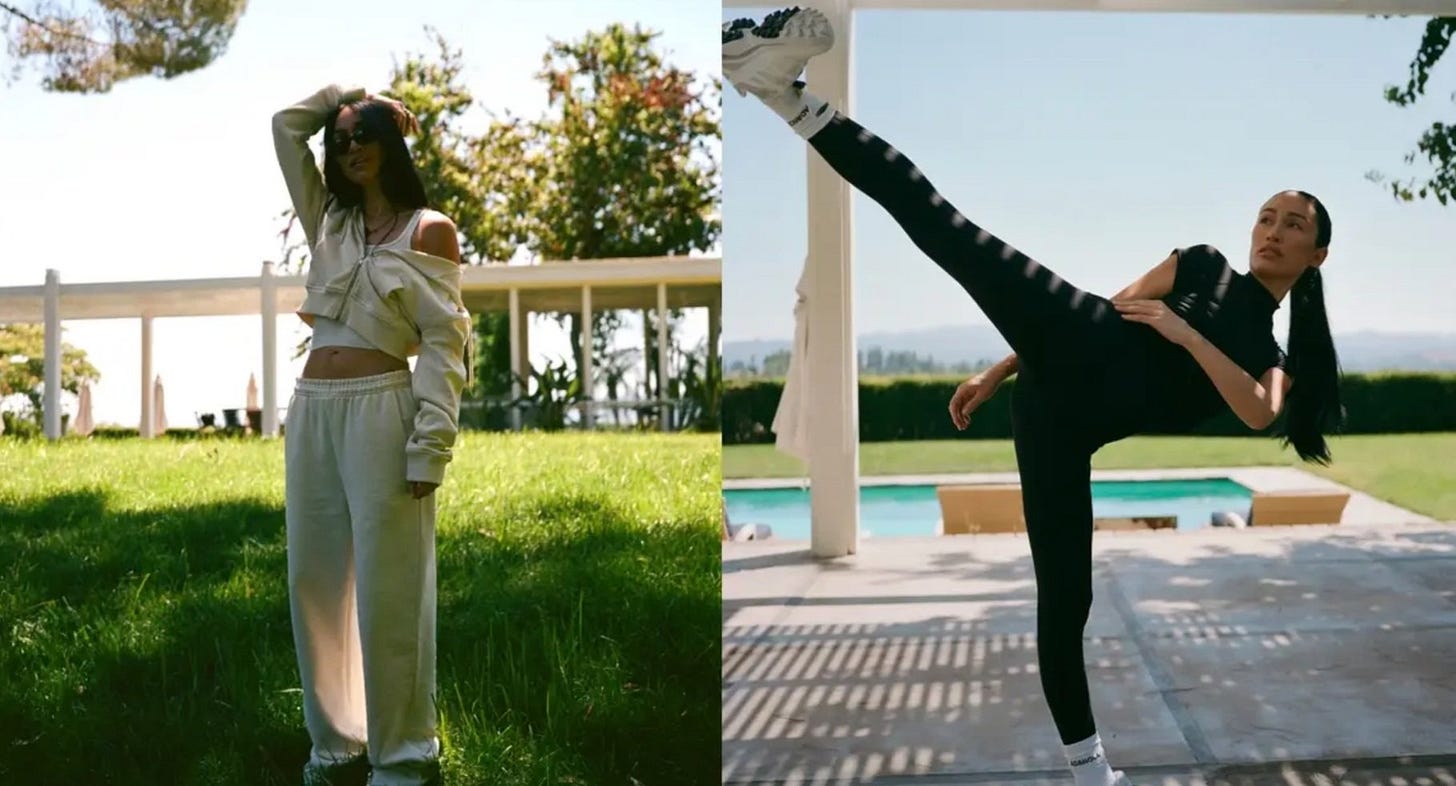Adanola: How Much Value Can Brands Drive Through Scarcity?
On Brand & Marketing
Adanola is all over Instagram and people can’t have enough of it.
Launched in 2015, by Josh & Hyrum Cook, two serial entrepreneurs who you would recognise from the Dragon’s Den in the UK, the brand has been trying to redefine athleisure and even as a small brand, making ripples in this highly competitive race for attention online.
In 2022-23, Adanola has reported a 311% rise in gross sales and has seen its active customer database rising by 250%.
The brand is known for its ADA Hoodie and the Ultimate Black Leggings, which is also its best-selling product recording monthly sales increase of over 190% across the last six months, averaging 16 pairs sold every hour.
The business has grown its headcount from 32 people a year ago to 87 now. Earlier last week, Adanola’s new launch of Autumn-Wear 2023 set to be launched 4PM BST was already sold out at 3.50PM BST.
From the beginning of their launch Adanola’s strategy has been to drive adoption by stocking small batches and creating demand on social media. They have been able to drive up this by a mix of hyper visibility across social media platforms and curtailing the supply and managing scarcity of their bestsellers.
Part I. The Off-duty Uniform for the Cool Girl
Adanola’s Purpose: Outfits that fill the style gaps everyday between active and everyday wardrobe
As per their website, Adanola claims to be a lifestyle brand delivering quality activewear and wardrobe essentials that are accessible to everybody. “Every piece is designed to make you feel like your very best self, whatever you're doing.” They aim to be your off-duty uniform be it in the gym, running errands or just lounging. The three main values are:
Inspired by and delivering for their Community
Developing durable wardrobe essentials
Sustainability by running small production lines and using 100% plastic-free packaging
Archetype: Creator & Explorer (read about brand-archetypes, here)
We feel that Adanola is safely nestled between Creator and Explorer archetypes. With a sense of liberated imagination and delivering a strong vibe of movement and originality, Adanola definitely embodies the Creator. The Creator wants to think differently, have a strong ‘Sense of Self’ and is in the ‘Pursuit of Originality’. We also think Adanola embodies the Explorer archetype, even though it isn’t an “rugged” or “extreme sports” brand. However, it still has same drivers as an Explorer such as ‘Self discovery’, ‘Exploration’, and ‘Liberation’.
Adanola also leverages the same archetypal personalities when collaborating with celebrities and influencers, which drives the brand message and identity ever so strong.
Part II. Scarcity Cue to Popularity
One look at Adanola’s instagram will confirm that its social media strategy is driven by user-generated content. Some fantastic feed images come from paid collaborations that are driving the brand equity in a big way. Its reach in the last 30 days is over 10.3Mn and interactions stand over 80.5k, which are great numbers for a brand with ~500k followers.
A look at the website will confirm that many of the clothes flaunted by the influencers are out of stock (and have been for awhile)!
Some of the causes that drive scarcity and demand for Adanola are as follows:
Their core value and value chain drives the supplier limits
One of Adanola’s core value is sustainability and the value chain rests on small stocks. They communicate their small production batches on their website and reiterate it on Instagram via comments, when customers complain about stocks running out.
Collaboration with celebrity influencers drives brand popularity and the illusion of access
In 2022, the brand saw “two sell-out collaborations” one with Hans Schonberg and another with Pernille Teisbaek, while also partnered with high footfall retailers, Bandier in the US and Harrods in the UK.
Their latest celeb collaboration is with Steph Shep, the woman previously behind Kim Kardashian’s empire. Adanola X Steph Shep collection launched a fresh collection of activewear and lifestyle pieces which are largely sold out on the website.
Product placements with the fashion girlies drives the brand desire
Adanola has a long list of celebrity fans like Molly-Mae Hague, Rosie Huntington-Whiteley, who previously launched an edit with the brand, Kaia Gerber, Michelle Keegan and Kourtney Kardashian, giving them loads of PR content to leverage and the celebrity stamp of approval.
Supplier limits trigger the “Snob” effect
The snob effect states that the demand for scarce products among consumers decreases when others are consuming the same product or increasing their consumption of it. In other words, as consumption of the product increases, the less that product serves as a marker of uniqueness, and so, the less it is desired by those with a greater need to be unique. Products restricted in quantity through supplier limits serve as better markers of uniqueness than products restricted in quantity through excess consumer demand because they are being consumed by the masses.
Adanola’s small batch production trigger the “snob” effect making their product more and more desirable.
Part III. How bad is too much scarcity marketing?
Scarcity looks great for business, to start with, as we can already see with Adanola’s success. However, it gets boring real quick.
Scarcity can often backfire and trigger consumers to switch to competitive brand
In two studies, experimental and correlational, it is shown that consumers who do not get the product associated to scarcity appeals (vs. those who do) have higher intentions to switch to competitor brands. This effect is mediated by consumer anger. Among the possible causes that may lead to consumer anger, Funches (2011) has identified “broken promises, unfair treatment and expressed hostility”, that is the strategy of creating the illusion of scarcity might feel deceptive or downright dishonest to many. This may lead them to switch to another brand altogether.
Bad user experience = Bad reviews
Much like good reviews, bad reviews travel fast. In Adanola’s case, the spike in negative reviews on social media is as steep as good reviews. Almost 100% of the negative reviews talk about their disappointment in accessing the products online because they are always sold out. Many talk about product being sold out as the customer was checking out ! Others mention how their sales which was to go live at 4pm BST, already had “sold out” products at 3.50PM BST.
Not being able to articulate this problem in an authentic and emphatic way on social media, leads to continuously bad user experience. Adanola’s customer support team only always replies with standard responses every time a customer complains about stock on social media.
Scarcity-led “hype” can take attention away from the product
Scarcity-led hype can often lead the customers to think that the product is not great, minimising the value of the actual product. Upon assessing Adanola’s customer sentiment online, we think that they still have focus on the product to a large degree, but the conversation is slowly steering towards how hard it is to get their hands on the sweats, rather than the quality and the style itself.
Coming across as too exclusive is against their core value
For a brand claiming to be everybody’s everyday uniform, limited availability comes across as “exclusivity”, whether or not it is intentional. Here it is important to note luxury brands are built on tenets of exclusivity, while premium/mass brands claiming to be for everybody still have to abide by the rules of game, which is making products accessible.
Different type of consumers react to scarcity differently
Studies show that most Millennials will respond positively to scarcity marketing, for the most part. The results are largely similar for Gen Z, however, if pushed beyond a certain limit, or to an extreme, Gen Z consumers feel forced or limited in their freedom to choose or more generally perceive a lack of agency.
Adanola has definitely made waves in the athleisure category and the product itself is good quality (I have bought a few pieces that were still in stock!). However, all their hype is certainly hard to maintain long term. In the meantime, we’re here for the curated content and to see what they do next.




